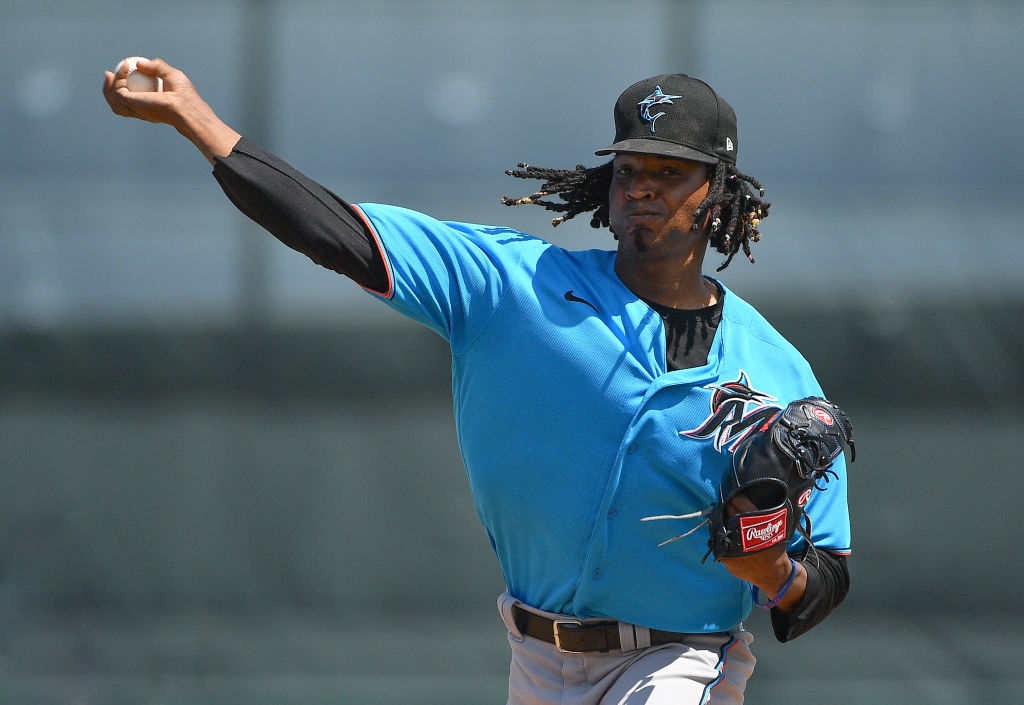MLB
Why Is a Strikeout Abbreviated With a ‘K’?

There’s no better way for an MLB pitcher to prove his dominance than by striking out a batter. Strikeouts are one of the most exciting occurrences during a major league game. Some of the game’s greatest pitchers have also found themselves close to the top of the all-time strikeout leaderboard including Roger Clemens, Randy Johnson, and of course, the leader himself: the legendary Nolan Ryan.
The next time you attend an MLB game, you may see fans putting up signs with the letter K every time the home team’s pitcher strikes out an opposing batter. Why is that? Let’s take a closer look at how why strikeouts are abbreviated with a K.
The explanation and origin of the strikeout
A strikeout is when a batter either takes or swings at three strikes in an at-bat. The batter is out and the at-bat is officially scored a strikeout.
Strikes can occur when the batter takes a pitch in the strike zone, swings and misses at a pitch, or fouls a pitch off (but only before strike three — a batter cannot strike out on a foul ball (unless it is tipped into the catcher’s mitt). It might be the best way to get a hitter out — by keeping the ball out of play, the pitcher effectively eliminates the batter’s ability to get a hit or make a productive out that advances the runner.
It’s also possible for a pitcher to record more than three strikeouts in a single inning. If the final strike gets away from the catcher, the batter can attempt to advance at which time the catcher has to throw out or tag the runner before they safely reach first base.
Baseball’s scoring system
Baseball has an intricate scoring system in which the scorekeeper assigns every position a number. Each action in a baseball game — outs, hits, substitutions, etc. — has an accompanying symbol to stand for it.
For example, if a batter walks, it’s recorded as “BB” (for base on balls). A home run is “HR.” If a batter lines out to first base, it’s recorded as a 3 — the number assigned to the first baseman. If the first baseman fields a grounder, throws it to the shortstop for the out at second and catches the return throw for a second out, it’s known as a 3-6-3 double play and recorded as 3-6-3.
The results are recorded in a box score. While each stadium has an official scorekeeper, baseball broadcasters often keep score of the game in order to keep track of what happens. Fans in the stands will sometimes keep score for fun.
Strikeouts are recorded with a K. But why is that, and who is responsible for that shorthand development?
Why is a strikeout abbreviated with a ‘K?’
Henry Chadwick, a mid-19th century Brooklyn writer born in Great Britain, was the inventor of the box score. Chadwick’s innovation got him inducted in the Baseball Hall of Fame.
Today media coverage of baseball spreads pitch-by-pitch results within seconds all over the world, but these outlets didn’t exist at the game’s outset. Box scores in newspapers were the only way many fans could keep track of their teams. It was a critical component of baseball’s evolution in popularity.
Chadwick developed the shorthand symbols used in scorekeeping, including K for strikeout. Chadwick used the letter K because it was the last letter in the word “struck.” The letter S was already used to denote when a base hit was a single.
One area where there can be brief confusion is that shutouts are noted with the letters SO, which could also conceivably stand for a strikeout. But most fans understand that K has become the universal symbol for when the pitcher fans a batter.











